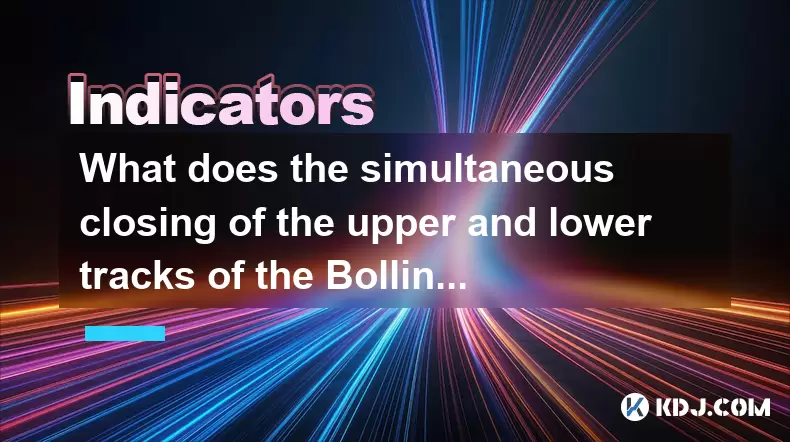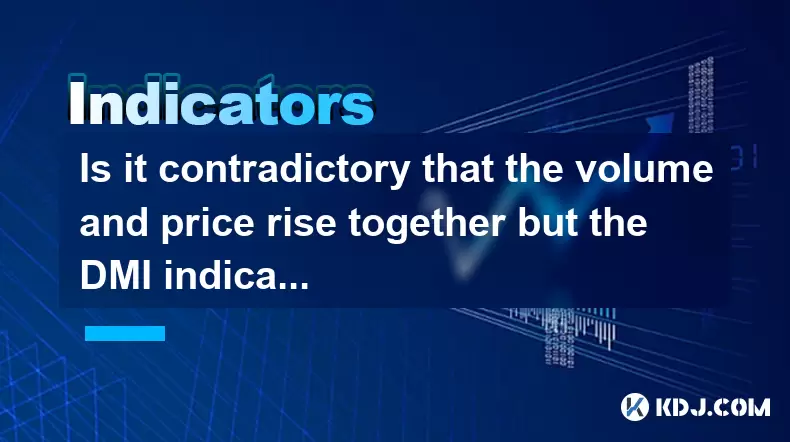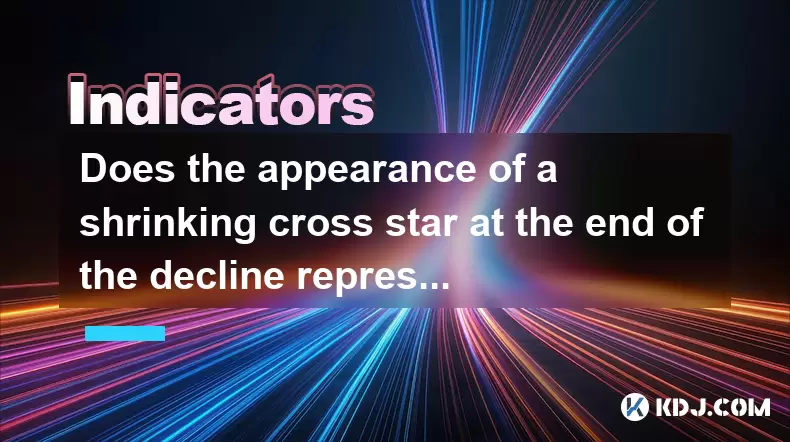-
 Bitcoin
Bitcoin $101,898.5005
-0.75% -
 Ethereum
Ethereum $2,258.1125
-1.07% -
 Tether USDt
Tether USDt $1.0004
0.01% -
 XRP
XRP $2.0178
-2.93% -
 BNB
BNB $624.0243
-1.53% -
 Solana
Solana $134.3298
-0.90% -
 USDC
USDC $0.9999
0.01% -
 TRON
TRON $0.2675
-2.05% -
 Dogecoin
Dogecoin $0.1538
-1.96% -
 Cardano
Cardano $0.5482
-1.11% -
 Hyperliquid
Hyperliquid $35.5636
5.45% -
 Bitcoin Cash
Bitcoin Cash $453.4902
-1.66% -
 Sui
Sui $2.5134
-2.97% -
 UNUS SED LEO
UNUS SED LEO $9.1292
1.77% -
 Chainlink
Chainlink $11.8457
-1.60% -
 Stellar
Stellar $0.2312
-2.73% -
 Avalanche
Avalanche $16.9721
0.29% -
 Toncoin
Toncoin $2.7549
-3.82% -
 Shiba Inu
Shiba Inu $0.0...01081
-1.10% -
 Litecoin
Litecoin $80.8250
-0.71% -
 Hedera
Hedera $0.1374
0.21% -
 Monero
Monero $305.4827
-2.36% -
 Ethena USDe
Ethena USDe $1.0006
0.00% -
 Dai
Dai $1.0000
-0.01% -
 Polkadot
Polkadot $3.2085
-3.12% -
 Bitget Token
Bitget Token $4.0845
-3.13% -
 Uniswap
Uniswap $6.3353
-1.63% -
 Pi
Pi $0.5085
-0.70% -
 Pepe
Pepe $0.0...08913
-3.82% -
 Aave
Aave $232.7090
-0.58%
What does the simultaneous closing of the upper and lower tracks of the Bollinger Bands indicate?
When Bollinger Bands narrow in crypto trading, it signals low volatility and potential for a sharp price move, prompting traders to watch for breakouts or false signals.
Jun 23, 2025 at 09:01 pm

Understanding Bollinger Bands in Cryptocurrency Trading
Bollinger Bands are a widely used technical analysis tool in cryptocurrency trading. Developed by John Bollinger, this indicator consists of three lines: the middle band is typically a 20-period simple moving average (SMA), while the upper and lower bands represent two standard deviations above and below the SMA respectively. These bands dynamically adjust to price volatility, expanding when market activity increases and contracting during periods of low volatility.
In the context of crypto markets, where price swings can be extreme and unpredictable, understanding the behavior of Bollinger Bands becomes crucial for traders aiming to make informed decisions. The simultaneous closing of both the upper and lower tracks often signals significant shifts in market conditions that warrant deeper exploration.
The narrowing of both bands suggests reduced volatility, which may precede a breakout or indicate consolidation phases.
What Happens When Both Tracks of Bollinger Bands Close Together?
When both the upper and lower tracks of Bollinger Bands begin to move closer together, it reflects a contraction in volatility. This phenomenon is commonly referred to as the "Bollinger Band Squeeze." In such scenarios, prices are confined within tighter boundaries, indicating that the market is currently experiencing a lull or preparing for a potential sharp movement.
This squeeze does not predict direction but rather alerts traders to an imminent change in momentum. It is especially relevant in crypto trading due to the high sensitivity of digital assets to news events, regulatory changes, and macroeconomic factors.
- Traders should monitor volume levels during this period – rising volume amid a squeeze may hint at a strong breakout soon.
- Price action near support/resistance zones should also be closely observed for confirmation signals.
- Timeframe considerations matter – shorter timeframes may experience more frequent squeezes compared to longer ones.
How Does a Simultaneous Closing Affect Price Predictions?
A simultaneous closing of the upper and lower bands creates what is known as a "narrow channel" around the price. While this doesn't provide directional bias on its own, it sets up conditions where any sudden surge in volatility could lead to rapid price movement either upwards or downwards.
For instance, if Bitcoin or Ethereum enters a phase where Bollinger Bands compress significantly, it might suggest that the market is waiting for a catalyst—such as a major exchange listing, halving event, or regulatory update—to push the price decisively in one direction.
- Historical patterns show that after prolonged compression, explosive moves often follow once the price breaks out of the narrow range.
- Combining Bollinger Bands with other indicators like RSI or MACD can help confirm breakout validity and avoid false signals.
- False breakouts are common – using stop-loss orders and careful position sizing is essential.
Is There a Connection Between Band Compression and Market Sentiment?
Yes, there is a notable relationship between the contraction of Bollinger Bands and overall market sentiment in cryptocurrencies. During periods of uncertainty or indecision among traders, the price tends to consolidate, leading to narrower bands.
Conversely, when strong bullish or bearish sentiment emerges, the bands widen again to reflect increased volatility. Monitoring this dynamic helps traders gauge whether the market is in a state of accumulation/distribution or panic/surge.
- On-chain metrics such as exchange inflows/outflows can complement Bollinger Band observations.
- Social media sentiment tools like Google Trends or Crypto Fear & Greed Index can offer additional context.
- Volume spikes during a squeeze often correlate with heightened retail participation or institutional movement.
Practical Steps to Trade During a Bollinger Band Squeeze in Crypto Markets
Trading during a Bollinger Band squeeze requires a disciplined approach. Here’s how you can effectively navigate such conditions:
- Identify the squeeze early – Use tools like the BandWidth indicator to measure the distance between the upper and lower bands.
- Mark key support and resistance levels – These will help determine potential breakout directions.
- Set conditional orders – Place buy-stop and sell-stop orders just beyond recent highs/lows to catch the breakout automatically.
- Use trailing stops – Once a breakout occurs, trailing stops help lock in profits while allowing room for continuation moves.
- Avoid over-leveraging – False breakouts are common in crypto, so managing risk per trade is vital.
Frequently Asked Questions
Can Bollinger Bands be used alone for trading decisions in crypto?
While Bollinger Bands are powerful, relying solely on them can lead to misleading signals. Combining them with volume indicators, trendlines, and sentiment analysis enhances accuracy, especially in volatile crypto environments.
Does a Bollinger Band squeeze always result in a breakout?
No, a squeeze indicates potential volatility but doesn’t guarantee a breakout. Sometimes the price continues sideways movement or results in a false breakout before resuming the original trend.
How do I configure Bollinger Bands for different crypto assets?
Most platforms default to a 20-period setting with 2 standard deviations, but adjustments may be needed based on asset volatility. For highly volatile altcoins, increasing the deviation or using a shorter period may improve responsiveness.
Are Bollinger Bands effective across all timeframes in crypto trading?
They are applicable across timeframes but behave differently. Shorter timeframes (like 15-minute or 1-hour charts) may generate more frequent squeezes, while daily charts tend to show more meaningful consolidations.
Disclaimer:info@kdj.com
The information provided is not trading advice. kdj.com does not assume any responsibility for any investments made based on the information provided in this article. Cryptocurrencies are highly volatile and it is highly recommended that you invest with caution after thorough research!
If you believe that the content used on this website infringes your copyright, please contact us immediately (info@kdj.com) and we will delete it promptly.
- VanEck, Pudgy Penguins, and Nasdaq: A New York Minute on Crypto's Big Moves
- 2025-06-24 01:05:12
- Ripplecoin Cloud Mining: Earn Daily Crypto Rewards?
- 2025-06-24 00:25:13
- SEI Price Prediction: Crypto Analyst Sees Potential Jump to $0.30!
- 2025-06-24 01:05:12
- Dogecoin, Cardano, and Crypto Security: Navigating the Wild West
- 2025-06-24 00:45:12
- Dogecoin Price Analysis and Ozak AI: Riding the Crypto Wave in Style
- 2025-06-24 00:45:12
- Neo Pepe Presale: The Next Big Meme Coin?
- 2025-06-24 00:32:08
Related knowledge

How to interpret that the time-sharing chart shows "volume and price rise together" but the MACD red column shortens?
Jun 24,2025 at 01:08am
Understanding the Concept of 'Volume and Price Rise Together'In cryptocurrency trading, when a time-sharing chart shows that both volume and price rise together, it is typically interpreted as a sign of strong buying pressure. This means more traders are entering long positions, pushing the price higher while increasing the trading volume. This phenomen...

Is it contradictory that the moving average system is arranged in a bullish pattern but the DMI shows a decline in trend strength?
Jun 23,2025 at 11:43pm
Understanding the Moving Average and DMI RelationshipIn cryptocurrency trading, technical analysis plays a crucial role in identifying potential trends and making informed decisions. Two of the most commonly used indicators are the Moving Average (MA) and the Directional Movement Index (DMI). While both tools aim to provide insight into market direction...

What is the significance of the gap formed by the gap opening not being filled within five days?
Jun 23,2025 at 09:42pm
Understanding Gaps in Cryptocurrency TradingIn the world of cryptocurrency trading, a gap refers to a situation where the price of an asset jumps from one level to another without any trading activity occurring between those two levels. This often happens over weekends or holidays when the market is closed, and significant news or events occur that impa...

Is it contradictory that the volume and price rise together but the DMI indicator shows that the trend strength decreases?
Jun 24,2025 at 01:00am
Understanding the Relationship Between Volume, Price, and DMIIn the world of cryptocurrency trading, it is common for traders to analyze multiple indicators simultaneously to form a comprehensive view of market conditions. Volume and price are two of the most basic and widely used metrics in technical analysis. When both volume and price rise together, ...

What does it mean when the continuous small positive lines push up but the MACD red column shortens?
Jun 24,2025 at 01:28am
Understanding the Price and MACD DivergenceWhen continuous small positive lines push up, it indicates that the price is experiencing a steady upward movement, albeit in a gradual manner. These small green candles suggest consistent buying pressure without any significant pullbacks or strong resistance being met. However, when this is accompanied by a sh...

Does the appearance of a shrinking cross star at the end of the decline represent a signal to stop the decline?
Jun 24,2025 at 12:14am
Understanding the Shrinking Cross Star PatternIn the world of cryptocurrency trading, candlestick patterns play a crucial role in technical analysis. One such pattern is the shrinking cross star, which often appears at the end of a downtrend. This pattern consists of a candle with a small body, typically appearing after a series of bearish candles, and ...

How to interpret that the time-sharing chart shows "volume and price rise together" but the MACD red column shortens?
Jun 24,2025 at 01:08am
Understanding the Concept of 'Volume and Price Rise Together'In cryptocurrency trading, when a time-sharing chart shows that both volume and price rise together, it is typically interpreted as a sign of strong buying pressure. This means more traders are entering long positions, pushing the price higher while increasing the trading volume. This phenomen...

Is it contradictory that the moving average system is arranged in a bullish pattern but the DMI shows a decline in trend strength?
Jun 23,2025 at 11:43pm
Understanding the Moving Average and DMI RelationshipIn cryptocurrency trading, technical analysis plays a crucial role in identifying potential trends and making informed decisions. Two of the most commonly used indicators are the Moving Average (MA) and the Directional Movement Index (DMI). While both tools aim to provide insight into market direction...

What is the significance of the gap formed by the gap opening not being filled within five days?
Jun 23,2025 at 09:42pm
Understanding Gaps in Cryptocurrency TradingIn the world of cryptocurrency trading, a gap refers to a situation where the price of an asset jumps from one level to another without any trading activity occurring between those two levels. This often happens over weekends or holidays when the market is closed, and significant news or events occur that impa...

Is it contradictory that the volume and price rise together but the DMI indicator shows that the trend strength decreases?
Jun 24,2025 at 01:00am
Understanding the Relationship Between Volume, Price, and DMIIn the world of cryptocurrency trading, it is common for traders to analyze multiple indicators simultaneously to form a comprehensive view of market conditions. Volume and price are two of the most basic and widely used metrics in technical analysis. When both volume and price rise together, ...

What does it mean when the continuous small positive lines push up but the MACD red column shortens?
Jun 24,2025 at 01:28am
Understanding the Price and MACD DivergenceWhen continuous small positive lines push up, it indicates that the price is experiencing a steady upward movement, albeit in a gradual manner. These small green candles suggest consistent buying pressure without any significant pullbacks or strong resistance being met. However, when this is accompanied by a sh...

Does the appearance of a shrinking cross star at the end of the decline represent a signal to stop the decline?
Jun 24,2025 at 12:14am
Understanding the Shrinking Cross Star PatternIn the world of cryptocurrency trading, candlestick patterns play a crucial role in technical analysis. One such pattern is the shrinking cross star, which often appears at the end of a downtrend. This pattern consists of a candle with a small body, typically appearing after a series of bearish candles, and ...
See all articles
























































































